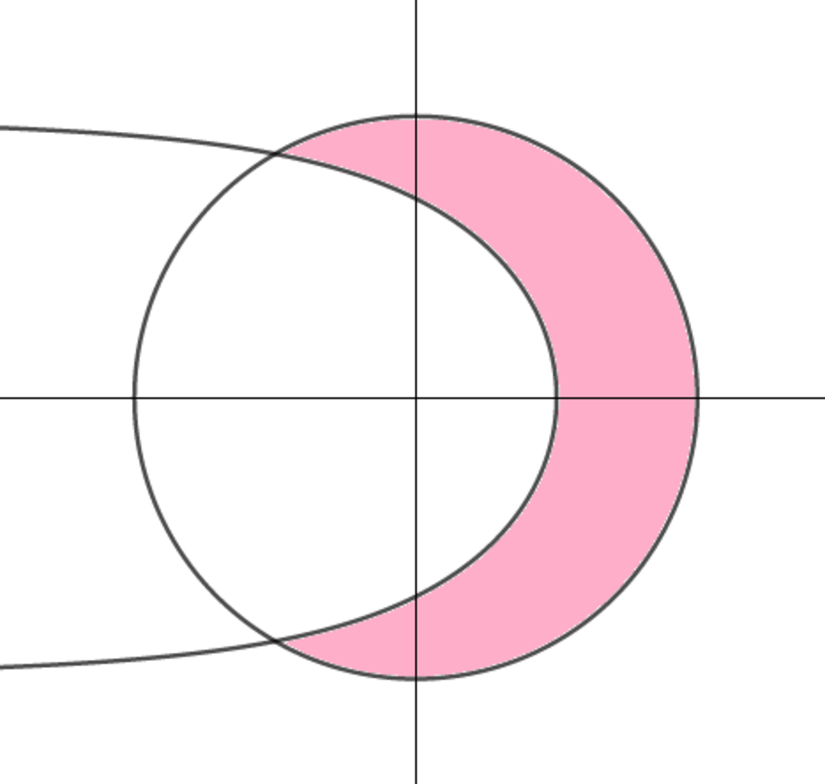C omplex-icated Cauchy Contour Crescent Curve

Let z denote a complex number. Two sets of complex numbers -- one satisfying ∣ z ∣ = 1 and another ∣ z + ∣ z ∣ ∣ = 1 -- are illustrated in the Argand plane as shown on the right. If the area of the pink region can be expressed as
B A π − D C E
where A , B , C , D , and E are positive integers, g cd ( A , B ) = g cd ( C , D ) = 1 , and E is square-free, input A + B + C + D + E as your answer.
Bonus. For fun, try finding different ways of solving the problem.
The answer is 11.
This section requires Javascript.
You are seeing this because something didn't load right. We suggest you, (a) try
refreshing the page, (b) enabling javascript if it is disabled on your browser and,
finally, (c)
loading the
non-javascript version of this page
. We're sorry about the hassle.
1 solution
If possible could you give me a little more detail on the integration part please, as I am not at all familiar with polar coordinate integration ( more on how you got the integral, as I understand how the integration was done )
Log in to reply
If we have a curve defined in polar coordiantes by the equation r = f ( θ ) , the area swept out between angles α and β is 2 1 ∫ α β f ( θ ) 2 d θ Check out this Wiki .
In this question, I want the area between the curves r = 1 and r = 2 1 sec 2 1 θ in the range − 3 2 π < θ < 3 2 π (the two curves intersect when θ = ± 3 2 π ). The rest is standard integration.
Log in to reply
Thanks a lot, just checking, this is like doing Riemann sums on sectors of a circle right, looks quite powerful
Log in to reply
@Jason Gomez – Yes, it can be thought of that way, where each δ θ element is approximated as a triangle.
Using polar coordinates, the noncircular curve is defined by 1 = ∣ ∣ r ( cos θ + 1 ) + i r sin θ ∣ ∣ = ∣ ∣ 2 r cos 2 1 θ ( cos 2 1 θ + i sin 2 1 θ ) ∣ ∣ = 2 r cos 2 1 θ so the curve is r = 2 1 sec 2 1 θ ∣ θ ∣ < π Thus we want 2 1 ∫ − 3 2 π 3 2 π ( 1 − 4 1 sec 2 2 1 θ ) d θ = 2 1 [ θ − 2 1 tan 2 1 θ ] − 3 2 π 3 2 π = 3 2 π − 2 1 3 making the answer 2 + 3 + 1 + 2 + 3 = 1 1 .